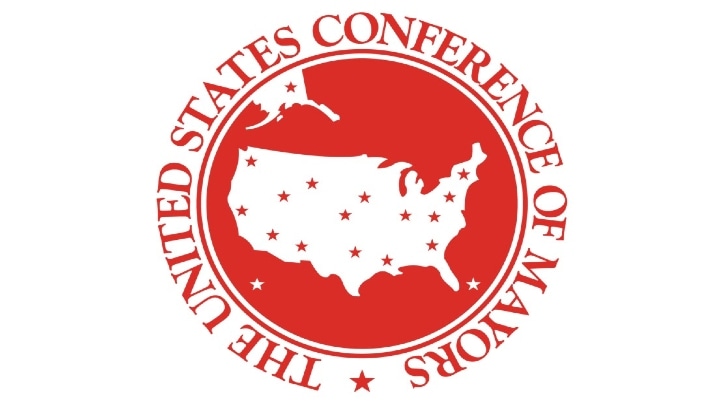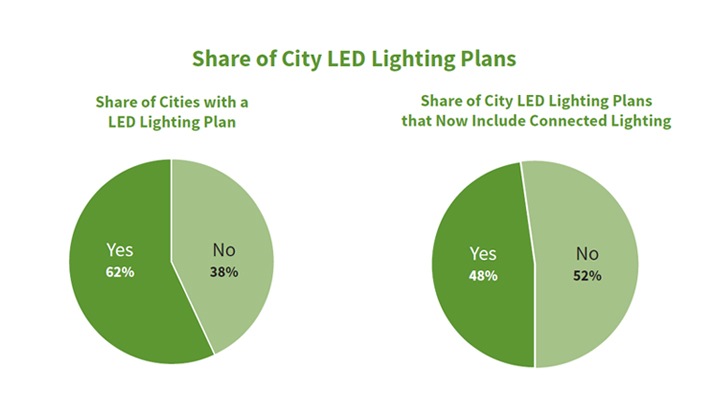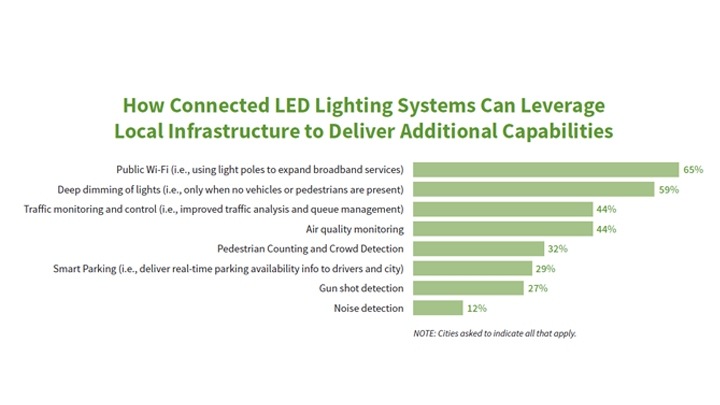
The United States Conference of Mayors (USCM) recently released a report showing how cities are using new technologies and infrastructure upgrades to advance local energy and climate action goals. The findings, based on a survey of 103 mayors representing cities larger than 30,000 residents, are particularly timely, as the federal government embarks on a massive new stimulus effort to modernize infrastructure and invest in technology to reduce carbon emissions across the country.
The report finds that LED lighting, all-electric vehicles (EV), low-energy buildings and solar now dominate the local energy agenda, with mayors continuing to strive to make their cities more energy-efficient. Mayors identified all-electric vehicles as the most promising technology for reducing energy use and carbon emissions in their cities. They also reported that:
Switching to LED lighting (including street lights, buildings and connected lighting systems) is one of the best ways cities can modernize their infrastructure to achieve their energy and sustainability goals. When asked what they believe are the key benefits of deploying LED and connected lighting systems, mayors overwhelmingly recognize the cost savings and carbon emissions/energy use reduction the technology delivers.
Unique to LED lighting, among the other technologies featured in the report, is that it has already been proven on a large scale. Numerous cities have deployed it and are reporting significant benefits. In fact, 62% of the cities surveyed already have a formal plan for deploying LED lighting throughout their city. As cities work with their federal partners to direct stimulus funding, LED lighting should be a priority area of desired investment.


In addition, cities continue to place priority on improving the energy performance of buildings, especially municipal buildings. This makes sense, as municipalities are among the largest building portfolio owners. The report identifies that almost three of four cities benchmark the energy performance of their own buildings (73%). Furthermore, retrofitting city-owned buildings to improve energy efficiency remains a top priority for 80% of mayors.
As New Bedford Mayor Jon Mitchell, who chairs the U.S Conference of Mayors’ Energy Committee stated: “Mayors continue to lead the … work to change how cities use energy and how they source energy to reduce carbon emissions. [This report serves] as a platform for mayors to exchange ideas about how to achieve these goals, and [ helps]guide the private sector and federal policy makers about how they can best contribute to the effort."
At Signify, we have been honored to be a part of USCM for nearly 10 years. The feedback received from mayors has helped to drive our innovation in the areas that are most important to cities and are highlighted in this report: Connected LED Lighting, Energy Efficient Buildings, Transportation, EV Infrastructure (streetlight charging stations), Broadband & Public WiFi (via the lighting infrastructure) and Solar. The stimulus funding marks a historic opportunity for federal, local and private partners to work more closely than ever before on these priority areas. They can quickly and effectively reduce carbon emissions while delivering additional benefits to their cities and citizens.
We pledge our support to turn mayors’ plans, and the benefits of modernized infrastructure, into reality for cities across the country.

November 14, 2023
How lighting technology can help reduce risks to migrating birds